Search Results for Tag: weather
Arctic sea ice: is the minimum maximum the new normal?
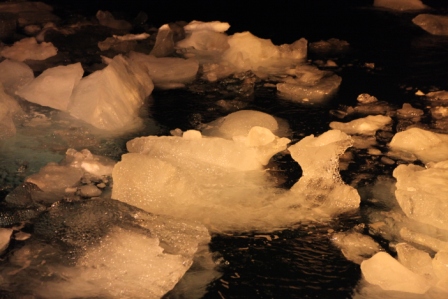
Even the winter sea ice is waning (Off Svalbard, pic. I.Quaile)
If you blinked, you might have missed it. The confirmation came this week that the Arctic sea ice reached yet another all-time low this past winter. It came and went, without too much ado.
Maybe the excitement was just past. The maximum extent was actually reached on March 7th, but of course you can only be sure it is really not going to spread any further once it has definitely been retreating for some time with the onset of spring.
I was waiting for the NSIDC confirmation, but not with any doubt in my mind that it would tell us officially the maximum for this season would be a minimum.
The danger is a “so what?” kind of reaction, or resignation, with the feeling that nothing short of some kind of unprecedented experimental geo-engineering could save the Arctic summer sea ice in the coming years, as the world continues to warm.
Lowest on record
The National Snow and Ice Data Center (NSIDC), part of the Cooperative Institute for Research in Environmental Sciences at the University of Colorado Boulder, and NASA confirmed this week that Arctic sea ice was at a record low maximum extent for the third straight year.
It reached the maximum on March 7, at 14.42 million square kilometers (5.57 milion square miles). Since then, it has started its annual decline with the start of the melt season. Some time in September it will reach its minimum.

Sea ice going, going, gone? (Photo: I Quaile, off Svalbard)
This year’s maximum is the lowest in the 38-year satellite record. NSIDC scientists said a very warm autumn and winter had contributed to the record low maximum. Air temperatures were 2.5 degrees Celsius (4.5 degrees Fahrenheit) above average over the Arctic Ocean. Against the background of overall warmth came a series of “extreme winter heat waves over the Arctic Ocean, continuing the pattern also seen in the winter of 2015”, NISDC said in a statement.
The air over the Chukchi Sea northwest of Alaska and the Barents Sea north of Scandinavia was even warmer, averaging around 9 degrees Fahrenheit (five degrees C) above the norm.
NSIDC director Mark Serreze said in his statement: “I have been looking at Arctic weather patterns for 35 years and have never seen anything close to what we’ve experienced these past two winters.”
The winter ice cover was also slightly thinner than that of the past four years, according to data from the European Space Agency’s CryoSat-2 satellite. Data from the University of Washington’s Pan-Arctic Ice Ocean Modeling and Assimiliation System also showed that the ice volume was unusually low for this time of year.
Record summer melt ahead?
“Thin ice and beset by warm weather – not a good way to begin the melt season,”, said NSIDC lead scientist Ted Scambos.
A low maximum does not necessarily mean the minimum to be measured in September will also be a record low, as it depends on summer weather patterns. But Julienne Stroeve from NSIDC and professor of polar observation and modeling at the University College London said “Such thin ice going into the melt season sets us up for the possibility of record low sea ice conditions this September”.
“While the Arctic maximum is not as important as the seasonal minimum, the long-term decline is a clear indicator of climate change”, said Walt Meier, a scientist at the NASA Goddard Space Flight Center Cryospheric Sciences Laboratory and an affiliate scientist at NSIDC. Iceblog readers might wonder if that is stating the obvious, but given the attitudes of the US administration, you can’t take anything for granted.

Data from satellites is key. Reception centre at KSAT in Tromso, Norway, Pic. I Quaile)
The September sea ice measurements began to attract attention in 2005, when the ice extent first shrank to a record low over the period of satellite observations. It broke the record again in 2007 and in 2012. There used to be little interest in the maximum extent of the Arctic sea ice at the end of winter. I can remember reading with concern and writing a piece about the maximum extent also reaching a record low in 2015.
NOAA (climate.gov, “science & information for a climate-smart nation”!) said in its statement:
“Arctic sea ice extents have followed a steady downward trajectory since the start of the 21st century – at the same time global temperatures have reached new record highs. Betides setting multiple record low summertime minimum extents, Arctic sea ice began to exhibit a pattern of poor winter recovery starting around 2004.”
Living on thin ice
I remember an expedition to Alaska in 2008, when locals at Barrow told me about their personal experiences of the sea ice becoming thinner and less dependable. Some years later I heard similar reports from people in Greenland, who were selling their sled dogs and buying boats in preparation for changing from ice to open water fishing. The data backs them up.

Sled dog – out of work? (I.Quaile, Greenland)
Yereth Rosen, writing for Alaska Dispatch News, draws attention to the problems of continuing to collect that data. She quotes NSIDC’s Serreze:
“Just how well the center will be able to track sea ice in the future remains unclear. No new satellite is expected to be in place until 2020, and there are concerns about potential interruptions in the record that goes back to 1979… We’re at a situation where the remaining passive microwave instruments up there are kind of elderly. If we have satellite failures, we could lose that eye in the sky”.
Now there is a worrying thought.
Against the background of budget cuts proposed by the Trump administration, that – to put it mildly – does not regard tracking climate change as a high priority – scientists are understandably worried about the future of scientific research on climate and environment related issues.
Method in the madness?
Without reliable continuous satellite data, it would be much harder to track how climate change is affecting the polar regions, the ocean and our planet in general. This may well be the intention of climate-change deniers behind the scenes. But climate change itself will not go away – and the impacts will be increasingly evident.
Tim Ellis, writing for Alaska Public media, quotes Serreze as saying the polar ice cap will not last long if the region continues to warm at this rate.
“We are on course sometime in the next few decades, maybe even earlier, to have summers in the Arctic where, you go up there at the end of August, say, and there’s no ice at all.”
“The view from space in the fall of around 2040” , he went on – assuming we still have satellites to take the pictures – “will be of a blue Arctic Ocean, aside from some scattered icebergs and clusters of pack ice”.
I don’t know about you, but I find that a rather depressing thought.

My kind of sea ice – frozen Chukchi Sea (Pic: I.Quaile)
Implications for the rest of the globe
Andrea Thompson, for Climate Central, writes “even in the context of the decades of greenhouse gas-driven warming, and subsequent ice loss in the Arctic, this winter’s weather stood out.”
She also reminds us of the global impacts of a warming Arctic and decline in sea ice:
“The Arctic was one of the clear global hotspots that helped drive global temperatures to the second- hottest February on record and the third-hottest January, despite the demise of a global heat-boosting El Nino last summer.”
This week the UN’s World Meteorological Organisation (WMO) said 2016 had been the hottest year ever recorded, and that the record-breaking heat had continued into 2017, sending the world into “truly uncharted territory”.
“The dramatic melting of Arctic ice is already driving extreme weather that affects hundreds of millions of people across North America, Europe and Asia, according to emerging research”, Damian Carrington writes in the Guardian.
On March 15th, Carrington published an article entitled “Airpocalypse smog events linked to global warming”, referring to extreme smog occurrences in China.
Optimism – the only way to go?
This week I interviewed German oceanologist and climatologist Mojib Latif. I wanted to find out whether the highly unusual extreme rainfall and flooding happening in Peru could be explained by natural cycles or was likely to be a climate change impact which could reoccur. You can read the interview here or listen to it on my Living Planet show this week online or on soundcloud.
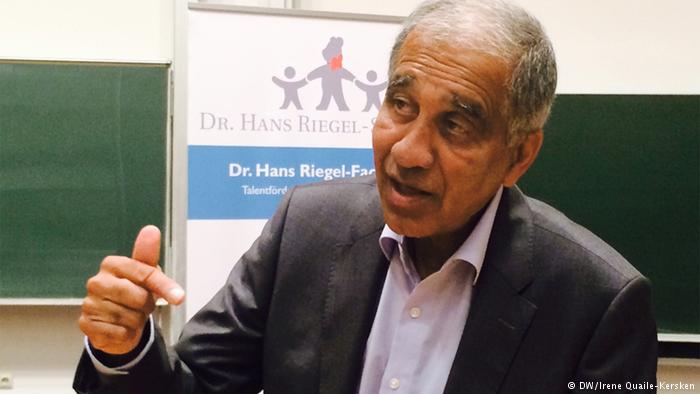
Professor Latif on a visit to Bonn. (Pic. I.Quaile)
The professor stressed that the scientists are baffled, because it is not really the time for an el Nino, although this seems to be a “coastal el Nino”, driven by exceptionally warm water off the coast. Of course he is reluctant to attribute any single event to climate change. He stated unequivocally, though, that the warming of the ocean worldwide was absolutely inexplicable without anthropogenic CO2 emissions, that this is all in line with climate models and that we should all be preparing for an increasing number of increasingly extreme weather events, as the world warms.
He says the governments of the world (apart perhaps from the new US administration) are in no doubt that climate change is happening and they need to halt it. But they have so far failed in their attempts.
When I asked Professor Latif if he still felt optimistic, he told me we really had no other choice. While critical of the lack of government action, he is convinced the world will realize that renewables are ultimately far superior to fossil fuels and will ultimately prevail. The question is whether that will happen in time. As far as the Arctic summer sea ice is concerned, I have to go with a Scots expression: “A hae ma doots”.
Hottest year – scary, but not for Chinese Arctic shippers?
As I sit in my Bonn office between thunderstorms in a week where we reached a record 36 degrees Celsius here, I am not surprised to read that the World Meteorological Organization (WMO) sees 2016 on track to be the hottest year ever.
The WMO bases its conclusions on two separate reports from NOAA and NASA GISS.
Global temperatures have already shattered previous records for the first six months of the year. And, no, it is not just El Nino. The WMO says June 2016 was not only the 14th consecutive month of record heat, but also the 378th consecutive month with temperatures above the twentieth century average. That means we haven’t been below the average since 1984.
The extraordinary becomes the norm
In the last blog post I quoted an article about the extraordinary years becoming the normal. Here we go again.
“The El Nino event, which turned up the Earth’s thermostat, has now disappeared. Climate change, caused by heat-trapping greenhouse gases, will not. This means we face more heatwaves, more extreme rainfall and potential for higher impact tropical cyclones”, said WMO Secretary-Gerneal Petteri Taalas in a press release.
The WMO also notes the corresponding rise in CO2 concentrations:
“Carbon dioxide concentrations have passed the symbolic milestone of 400 parts per million in the atmosphere so far this year. CO2 levels vary according to the season, but the underlying trend is upwards. They showed a surprising increase for the first half of 2016, rising in June 2016 to nearly 407 ppm, 4ppm greater than June 2015”, the WMO writes.
Melting away…
So what does all this mean for our beloved Arctic?
Of course it has been experiencing the record warming even more than the rest of the planet. The WMO mentions a very early onset of the annual melting of the Greenland ice sheet and Arctic sea ice, and exceptionally low snow cover in the northern hemisphere.
“The extent of Arctic sea ice at the peak of the summer melt season now typically covers 40 percent less area than it did in the late 1970s and early 1980s. Arctic sea ice extent in September, the seasonal low point in the annual cycle, has been declining at a rate of 13.4 percent per decade”, says WMO.
Chinese go full-speed-ahead
Now a lot of people are very concerned about that. But presumably the Chinese shipping giant COSCO is not amongst them. The company has announced that it will be sending three cargo ships through the Arctic Ocean this summer, since global warming is making the route more viable. It will be using the Northeast Passage, which goes north of Russia. As the news agency AFP puts it, “China sees the opportunity to reshape global trade flows”, as this route can shorten journey times between Asia and Europe considerably.
The Yong Sheng merchant ship left the Chinese port Tianjin last Saturday, bound for the UK, carrying a “mixed cargo” through the Northeast Passage. It seems the ship has used the route twice in the past three years. This time, two more COSCO ships, the Tian Xi and the Xiang Yun Kou are also scheduled to navigate the passage next month.
AFP quotes the company as saying it aims to “normalize” services on the route. So, once again, the extraordinary is becoming normal? This worries me for several reasons. First, it is an indicator that this industry giant is convinced climate warming is here to stay, and illustrates that there are those who are happy to profit from it. Secondly, as discussed many times here on the Ice Blog and in my articles for DW, shipping in Arctic waters is still a very high-risk business for the environment and, of course, the humans on board the ships.
Room for dispute
Earlier this year, China’s Maritime Safety Administration published a Chinese language guide including nautical charts and descriptions of ice conditions for the other Arctic route, the Northwest Passage, which runs north of Canada. That begs the question: is this part of Canada’s waters, as Ottawa claims, or international waters?
Clearly, economic and strategic interest in the Arctic is spreading well beyond the Arctic countries as the frozen north warms.
Without wanting to be alarmist, I have to mention a comment by the French Defence Minister Jean-Yves Le Drian, who proposed in June that European navies should coordinate patrols in Asian waters to reinforce the maritime order based on the UN Convention on the Law of the Sea, against the background of the dispute between China and others in the South China Sea. He warned that if the laws of the sea are not respected in that region, they could also be challenged elsewhere, for instance in the Arctic.
Worrying times.
Pressure to implement Paris
Back to the WMO. Secretary-General Petteri Tallas stresses that the record-breaking warming underlines the urgent need to approve and implement the Paris Agreement and speed up the shift to renewable energy.
But so far, remember, there have definitely NOT been enough countries ratifying to bring the agreement into effect. UN Secretary-General Ban Ki-moon has invited world leaders to a special event in September to deposit their instruments of ratification or accession to the Paris Agreement. Perhaps the heatwaves, storms, extreme rainfall and other “abnormal but becoming normal” events in their respective countries will persuade these politicians (especially in the countries responsible for the majority of emissions) that time is running out if we want to keep to that two-degree Celsius target (let alone the 1.5). The average temperature in the first six months of this year was already 1.3 degrees warmer than pre-industrial times. Some experts are already convinced we need to start drawing greenhouse gases out of the atmosphere and store them if we are to avert climate catastrophe. A daunting prospect, to say the least.
Arctic Sea Ice: going, going, gone?
July 15th is Arctic Sea Ice Day. You might be forgiven for not realizing that. Every day is the day of something (usually more than just one), the initiator, Polar Bears International, is popular, but maybe not yet a household name, and the world is in turmoil, with terrorist attacks, refugees, Brexit and no shortage of other topics dominating the news agenda.
Still, the Arctic sea ice deserves all the attention it can get.
Another record low
The latest data released by the US-based National Snow and Ice Data Center (NSIDC) for the month of June shows the Arctic sea ice reached yet another record low, the lowest extent for June ever measured since satellite records began in 1979. So far this year, every month except March has seen a record low in the extent of the Arctic sea ice.
Alaska is experiencing a massive heatwave after an amazingly warm first half of the year.
An article on RCI’s Eye on the Arctic says the sea ice melt seems to be attributable to unusual weather patterns over the Arctic. It seems the temperature reached an incredible 29.2 degrees in Kugluktuk, Nunavut on June 5th, 27 on July 6th. Normally, the article tells us, the temperature in western Nunavut varies between 8 and 15 degrees. It is not hard to imagine how this is making the sea ice ooze away. The reflective white ice is replaced by dark ocean, which absorbs even more heat, exacerbating the warming further.
Ice, sea, sky on Living Planet
That is just one of the issues I talked about in my interview with UN science and oceans advisor Susan Avery, which featured in the last Iceblog post. The interview is broadcast in full (well not quite full, but at length), in the latest edition of DW’s Living Planet programme: Ice, Sea and Sky, which I hosted in our Bonn studio. Avery talks about how climate change affects the ocean in general, as well as focusing in particular on what is happening in the Arctic.
“I would say the polar regions are regions where we don’t have a lot of time before we see major, massive changes, where we really need to get our observations and science and models working together”, Avery told me.
Message from Iqaluit
Actually, major, massive changes seem to be already there. Marking Arctic Sea Ice Day, the Living Planet program includes a story by Canadian reporter Elyse Skura, based at Iqaluit, in the northern territory of Nunavut. She talks to local Inuit people about how climate change is affecting their daily lives, and especially traditional livelihoods like hunting and fishing. Hearing the voices of people there talking about the changes in the sea ice and the extent to which their traditional livelihoods are inter-connected with nature, with the environment, land, ocean, ice, atmosphere, I was reminded of my own encounter with the Inupiat people in Barrow, Alaska, back in 2008. The observations are similar. The only difference seems to be that the ice is melting even faster as the Arctic warms more rapidly.
The story ends on a kind of optimistic note, suggesting that the Inuit have always been able to adapt to changing environments. Ultimately, people have no choice but to adapt to a climate that is already changing. Susan Avery told me the extra heat produced by our CO2 emissions ends up mostly in the ocean. 93 percent was the figure she quoted. And she explained how it does not stay at the surface, where it will likely hang around for 40 or 50 years, but is also pumped down to the depths in the course of circulation patterns. And there, she says, it will stay for centuries. It is frightening to think that some scientists believe this means we are already committed to a temperature rise of up to two degrees Celsius.
“No job for an optimist”
I remember discussing the issues of “mitigation and adaptation” in detail in connection with climate change – in an interview with the “new” head of the UNFCCC, the climate secretariat, Yvo de Boer, in 2006. I have always been worried that adaptation could mean abandoning the need to mitigate, to change our behavior and lifestyles and shift to a low-carbon (and ultimately zero-carbon) economy. De Boer convinced me then that adaptation was essential, with climate impacts already visible and tangible. He stressed it was not a case of either-or, but of doing both. How right he was.
But of course he resigned in frustration after the disastrous Copenhagen conference. “No job for an optimist” was the title I gave my commentary at that time.
(Looking back at that, it’s interesting to see how web design has changed since then!)
When the abnormal becomes the norm
So, back to the Arctic Sea Ice, this July 15. A group of scientists studying Arctic systems met in Washington D.C. earlier in the week at an event in the National Press Club sponsored by SEARCH (the Study of Environmental Arctic Change).
Chris Mooney reports on it in The Washington Post, under the title ‘The extraordinary years have become the normal years’. This is something I also hear repeatedly from experts I interview on extreme weather events and similar occurrences.
Mooney quotes Marco Tedesco from Columbia University, a Greenland scientist:
“I see the situation as a train going downhill. And the feedback mechanisms in the Arctic are the slope of your hill. And it gets harder and harder to stop it.”
NASA scientist Walt Meier, who studies Arctic sea ice in particular, is quoted as saying we have lost about twice the size of Alaska in terms of area. He also notes we’ve lost about 50 percent of the thickness. The particularly alarming thing is that all this is happening faster than “even the most aggressive climate models”, says Meier.
Mooney also mentions a 2014 study indicating that in the past three decades, the loss of Arctic sea ice has added 25 percent to the warming caused by carbon dioxide in the atmosphere. A stunning figure! That indicates the extent of the feedback effects coming out of the high North – which should really make us sit up, pay attention and then get moving on cutting greenhouse gas emissions this ArcticSeaIceDay.
Hot, hot, hotter.. can UN talks in Bonn make a difference?
After all the hype surrounding the Paris Climate Agreement in December, there is a real danger of anti-climax, of feeling self-satisfied, of sitting back saying, “Yes, we did”, while the planet continues to break all temperature records and fossil fuel emissions continue to rise.
The first four months of this year were the hottest ever recorded. Even the “ice island” of Greenland has seen temperatures spiking in April, typically a cold month. NOAA says 2016 could be off to a similar start to 2012, when the surface of the ice sheet started melting early and then experienced the most extensive melting since the start of the satellite record in 1978. We have had several reports of islands being submerged by rising seas and devastating forest fires in Canada and now Russia, which experts say will be more common as the planet warms.
Close to my office here in Bonn, Germany’s UN city, the first official working meeting of all the parties to the Paris Agreement started on Monday, going on until next Friday. I have been there, on and off, talking to people, listening in, trying to get a sense of what is happening – or not, as the case may be.
But the atmosphere in Bonn’s new World Conference Centre is definitely low-key compared with the hype surrounding the Paris Climate Conference. Yet the world climate agreement will be worthless if the countries of the world do not succeed in transmitting it into actions in the very near future.
Time to deliver
The President of the Paris COP21, French Environmenent Minister Segolene Royal, and the incoming President of COP22, which will be held in Marrakech, Morocco’s Foreign Minister Salaheddine Mezouar, have made it clear that it is time to shift the focus from negotiation to implementation and rapid action.
The challenge ahead, they say, is to “operationalize the Paris Agreement: to turn intended nationally determined contributions into public policies and investment plans for mitigation and adaptation and to deliver on our promises.”
Indeed. There is no lack of evidence to support the urgent need for faster action on climate change. An increasing number of extreme weather events are being attributed to climate change. The CO2 concentration in the atmosphere is climbing steadily and is likely to cross the critical 400 ppm mark permanently in the not-too-distant future. The global temperature is already one degree Celsius higher than it was at the onset of industrialization. That means very rapid action is needed to keep it to the agreed target of limiting warming to two degrees and preferably keeping it below 1.5 degrees.
Three degrees and more?
The Paris Agreement was hailed widely as a breakthrough, with all parties finally accepting the need to combat climate change by reducing emissions of greenhouse gases. Countries have put pledges on the table, outlining their emissions reduction targets. But so far, the reductions pledged would still take the world closer to a three-degree rise in temperature.
At the Bonn meeting, the International Energy Agency (IEA), issued a warning that governments can only reach their climate goals if they drastically accelerate climate action and make full use of existing technologies and policies.
“The ambition to peak greenhouse gas emissions very soon is anchored in the Paris agreement, but we don’t see the actions right now to make this happen”, said Takashi Hattori, Head of the IEA’s Environment and Climate Change Unit. “At the same time, there are ‘GDP-neutral’ ways and means to get emissions to peak and then fall whilst maintaining economic growth, and that’s what we need to focus on.”
GDP-neutral means that a technology or policy does not negatively impact the economic growth of a country, and can actually contribute to the growth of that country.
In Bonn, Hattori presented what the IEA calls a “bridge scenario” involving the use of five technologies and policies which it says can bridge the gap between what has been pledged by governments so far and what is required to keep the global average temperature to as low as 1.5 degrees Celsius as part of what the agency terms a “well below 2 degrees world”
The five key measures which the IEA say could achieve a peak in emissions around 2020 are energy efficiency, reducing inefficient coal, renewables investment, methane reductions and fossil-fuel subsidy reform. That sounds to me like a very sensible – and practicable set of measures. But that doesn’t mean it will be easy.
Takashi Hattori stressed that “one size does not fit all” when it comes to climate and energy policies. Different measures will be required in different parts of the world. In the Middle East, for example, the greatest potential to reduce emissions is through reducing fossil fuel subsidies, he argued, while energy efficiency would have the greatest potential in Europe and China. He recommended the “massive deployment of renewables” in India and Latin America.
Other solutions outlined include smart grids, hydrogen as fuel that can be generated with renewable sources of energy, and “smart” agriculture.
The IEA says governments should make the energy transition not only because of rising temperatures, but because of other benefits, such as a reduction of air pollution. That makes sense. People in congested cities are more worried about pollution damaging their health than about climate change, the experts say.
I am reminded of an interview I conducted recently with Chinese expert Lina Li, when she told me she thought China’s air pollution problem would speed up the country’s ratification and implementation of the Paris Agreement.
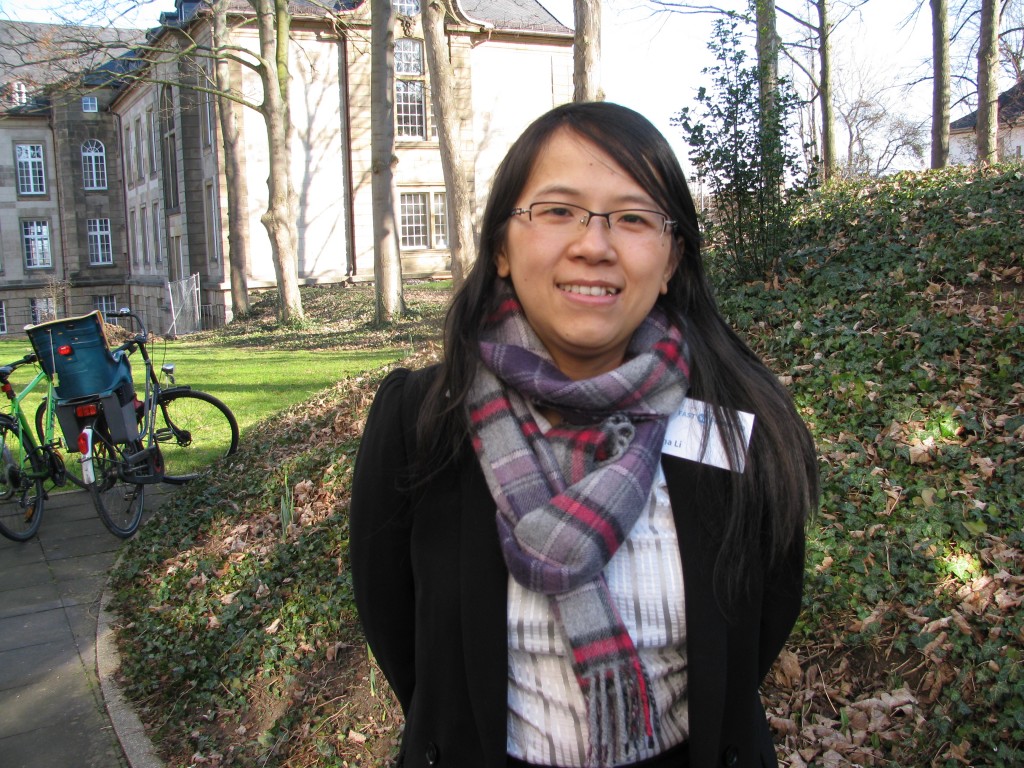
Lina Li from the Adelphi think-tank told me pollution concerns could speed up China’s climate action (Pic. I.Quaile)
The cost argument
Although many scientists are alarmed at the slow pace of emissions reductions, IPCC chief scientist Hoesung Lee told the Guardian in an interview it was still possible to keep to the two-degree target. The current UN climate chief Christina Figueres, who will hand over to Mexican Patricia Espinosa later this year, has said emissions would have to peak by 2020 if that limit is to be kept to. But Lee is keen to keep the options open, saying it would still be possible to keep to the limits if emissions peaked later. But he warned the costs could be “phenomenal”. He believes expensive and controversial geoengineering methods may be necessary to withdraw CO2 from the atmosphere and store it.
A report published this week by UNEP says the cost for assisting developing countries to adapt to climate change could reach up to 500 billion dollars annually by 2050. This is five times higher than previous estimates, the report says.
UNEP urged countries to channel more funds towards adaptation, saying the costs would rise “sharply”, even if countries succeed in limiting global temperature increase to two degrees Celsius.
I asked Mattias Söderberg, Co-Chair of the Climate change advisory group with the climate justice ACT alliance, how he felt about the progress of climate action and the role of the current Bonn meeting. He said the UNEP report, along with the alarming news about islands disappearing under rising seas in the Pacific, highlighted the urgent need for action. “Climate change is not a matter of tomorrow, but a crisis we need to deal with today.”
Time to ratify!
So far, 177 parties have signed the Agreement. But only 16 parties have ratified the treaty. It must be ratified by 55 parties representing 55 percent of total global emissions to enter into force. Söderberg called on wealthy, industrialized countries to move ahead with ratification:
“I am happy to see many of the poor and vulnerable countries moving fast with their ratification, and I hope other countries will follow soon. I am worried about the EU, which seems to be delayed”. Söderberg says the EU, could find itself on the sidelines, overtaken by others.
But the increasing concern over refugees and migration here in Europe could make a lot of countries look more closely at climate change, which is likely to increase the number of people having to leave their homes and look for a better life elsewhere.
“Go, world, go!”
NGO representatives stress that the Bonn talks can only help kick off the series of measures necessary to halt global climate change. Greenpeace climate policy chief Martin Kaiser told me the main work had to be done in the countries themselves, which have to work out their timetables to reach the goals agreed in Paris. That means an early transition to a fossil-free future. Kaiser called on host country Germany in particular, often cited as a model for its shift to renewable energy, to come up with a binding exit strategy for coal by 2030.
“Without an exit from coal, Germany’s signature under the Paris Agreement is worthless”, he told me.
The world’s top emitters, the USA and China, will also have to take major steps to halt climate warming. The delegates meeting in Bonn until May 26 have their work cut out for them. I have always been skeptical about the mass jubilation over the Paris Agreement. Yes, we needed it. But the proof of every pudding is in the eating. All the indications are that 2016 will be the hottest year on record, and probably by the largest margin ever. If the Paris document is to be more than a lot of pieces of paper, we will have to see things happening very soon – and definitely not just in the conference rooms of Bonn and elsewhere.
Climate change back on the agenda?
Trawling the media for climate-related stories over the weekend, I began to see some signs that the message might be getting across after all. I had just put the finishing touches to my story on “Why we don’t want to hear about climate change“, based on interviews with sociologist Kari Marie Norgaard from the University of Oregon and psychologist Per Stoknes from the Norwegian Business school, when I heard US Secretary of State John Kerry’s announcement that the USA and China would be cooperating and exchanging data in the run-up to the 2015 Paris climate talks, where a new climate deal is supposed to be agreed. I found myself feeling just a little bit more optimistic. If these two key players really put climate protection into action, maybe we will be able to get somewhere. A report on a study by the Chinese government on the disastrous air pollution in Beijing is not happy reading, but gives grounds to assume the Chinese government has to be serious about taking emissions in hand.
Arctic ambassador – a sign of the times?
Another announcement by the US Sec of State leaves me with mixed feelings. There is going to be a US ambassador for the Arctic. On the one hand, it is always good to see the Arctic getting attention. On the other hand, the motivation does not make me jump for joy. An item from the news agency AFP writes of “a region increasingly coveted by several countries for its oil and other raw materials”. Indeed. That is the worrying bit. In case you missed it, (the Arctic announcement did not get huge coverage), Kerry said in his statement:
“The Arctic region is the last global frontier and a region with enormous and growing geostrategic, economic, climate, environment and national security implications for the United States and the world…President Obama and I are committed to elevating our attention and effort to keep up with the opportunities and consequences presented by the Arctic’s rapid transformation – a very rare convergence of almost every national priority in the most rapidly-changing region on the face of the Earth”. It is good to see climate and environment get a mention at least.
A “Stern” warning
The Guardian had a guest article by Nicholas Stern, the author of that famous Stern Report on the economics of climate change back in 2006 (yes, it really is that long ago).The background to this, of course, is the wild weather in the UK. Now I do not wish that kind of weather on anyone, but in terms of drawing attention to climate change it has certainly been very important. Stern writes “The record rainfall and storm surges that have brought flooding across the UK are a clear sign that we are already experiencing the impacts of climate change”. He makes a clear case for linking the two. He also brings in the other extreme weather around the globe, including Australia, Argentina and Brazil and the devastating typhoon Haiyan in the Philippines last year. Stern has clear advice for the politicians:
“This is a pattern of global change that it would be very unwise to ignore.” Stern says the risks are even bigger than when he wrote the 2006 report. “Since then, annual greenhaouse gas emissions have increased steeply and some of the impacts, such as the decline of Arctic sea ice, have started to happen much more quickly.”
I hope a lot of decision-makers and influential business people have read or will still read Stern’s article. He calls for rapid action and investment. He has a clear message for the European Union, currently not the most popular international organisation with the British government. “The UK whould work with the rest of the EU to create a unified and much better functioning energy market and power grid structure. ‘this would also increase energy security, lower costs and reduce emissions. What better was is there to bring Europe together?” Other measures recommended would be to implement a “strong price on greenhouse gas pollution across the economy”. This, remember, is a renowned economist, not an environmental campaigner. He also warns against the temptation to cut overseas aid to fund adaptation to climate change. “It would be deeply immoral to penalise the 1.2 billion people around the world who libve in extreme poverty…In fact, the UK should be increasing aid to poor countries to help them develop economically in a climate that is becoming more hostile largely because of past emissions by rich countries”- Yes. Yes. Yes.
Don’t let the weather distract from your climate awareness!
The other piece of writing which inspired me over the weekend was in the ImaGeo blog by Tom Yulsman: “Move over polar vortex“. He looks at the new analysis produced by the UK’s Met Office:
“If a new scientific analysis is correct, the repeated bouts of extreme weather on either side of the Atlantic are indeed unusual – and both are manifestations of a chain of climatic teleconnections that reach half way around the globe and all the way to the tropics”.
There is a lot of talk in this piece of whether the polar vortex is weak (as discussed in my article More Arctic Weather in a Warming World?) Or actually “particularly intense”. I would recommend you read Tom’s blog for yourselves for the details and his views. But the insight I would leave you with here as “food for thought” is where he quotes a paper in the journal Science.
“They conclude that the recent discourse focusing on the possible connections between winter weather and climate change distracts from the bigger issue: that is, regardless of extreme winter weather, climate change is undoubtedly real, and that harsh winters are not what we really need to be concerned about going forward as the climate continues to change”.
People love to talk about the weather. But if we use every instance of unusual weather to question the overall trend of global warming, with all the complex effects that has on our climate, winds, oceans etc, we run the risk of losing a necessary sense of urgency when it comes to reducing emissions. I am reminded, as I often am, of a young climate ambassador from the Netherlands during a fact-finding trip to Alaska in 2008. As we stood at the Visitor’s Centre for a glacier which is now no longer visible from that spot because it has retreated so far, he said that just brought home to him how “everything is connected”. Our everyday lifestyle in the industrialised world is melting the Arctic ice – and that, in turn, is contributing to the changing climate patterns which can radically alter the planet.




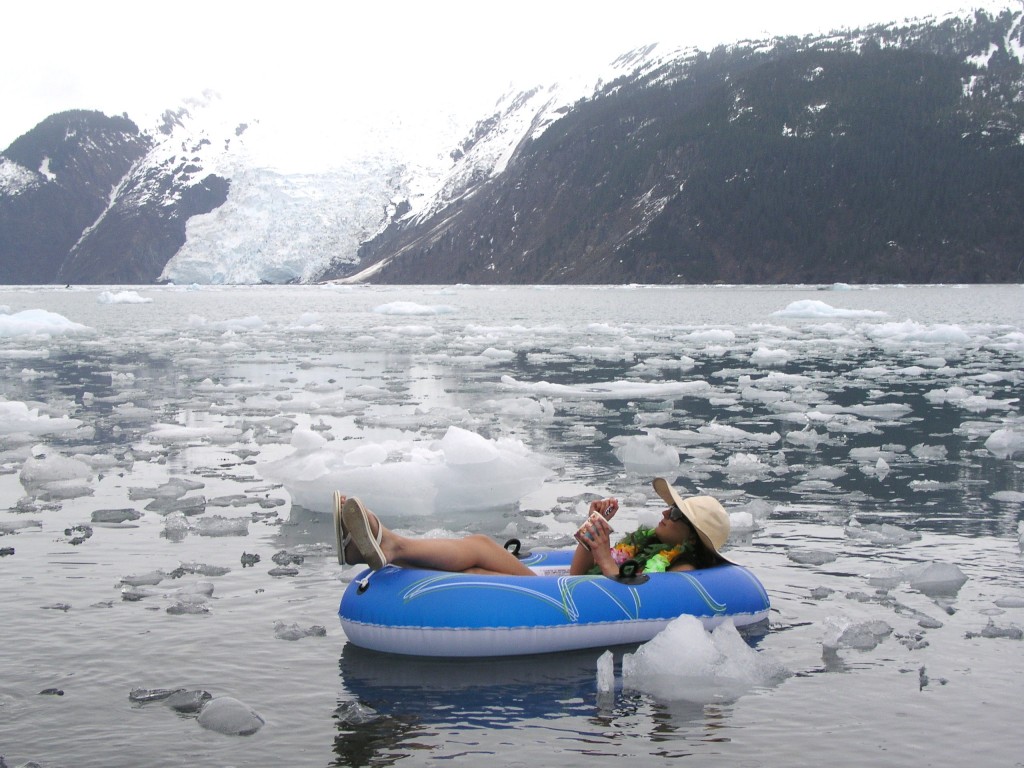
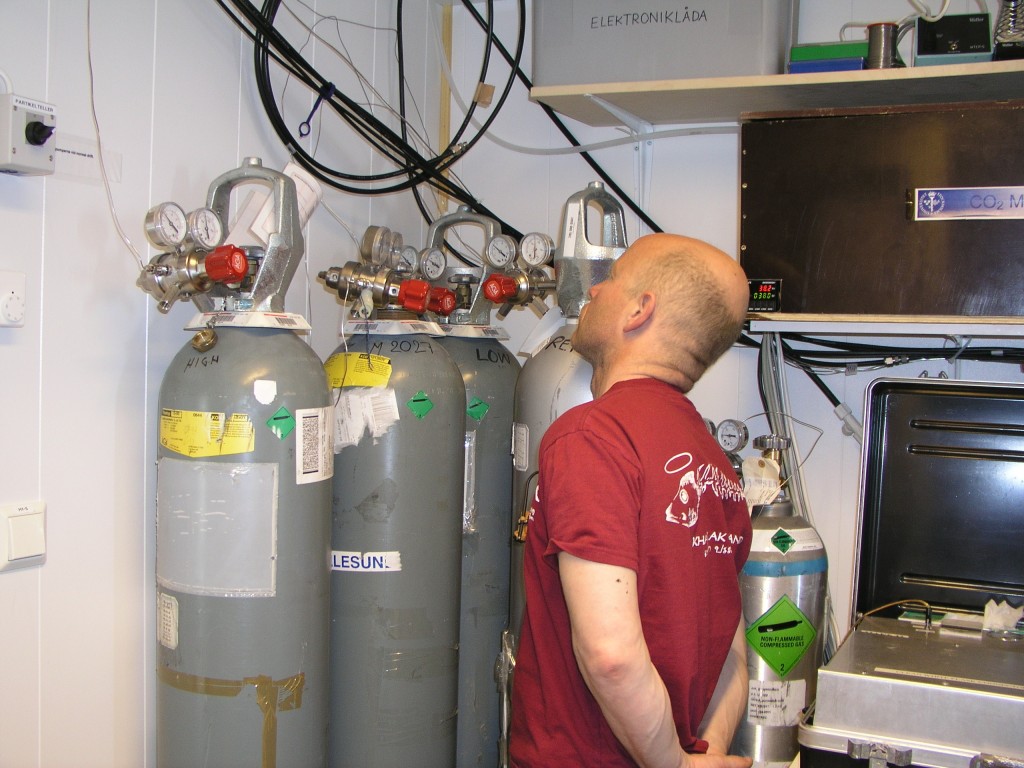
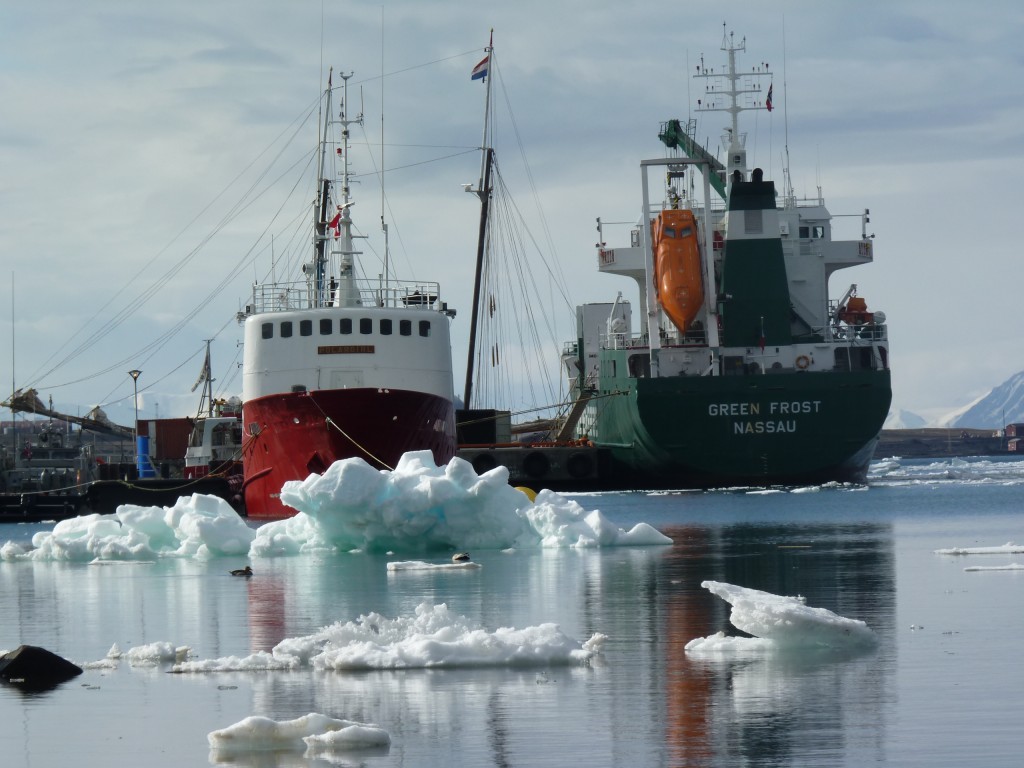



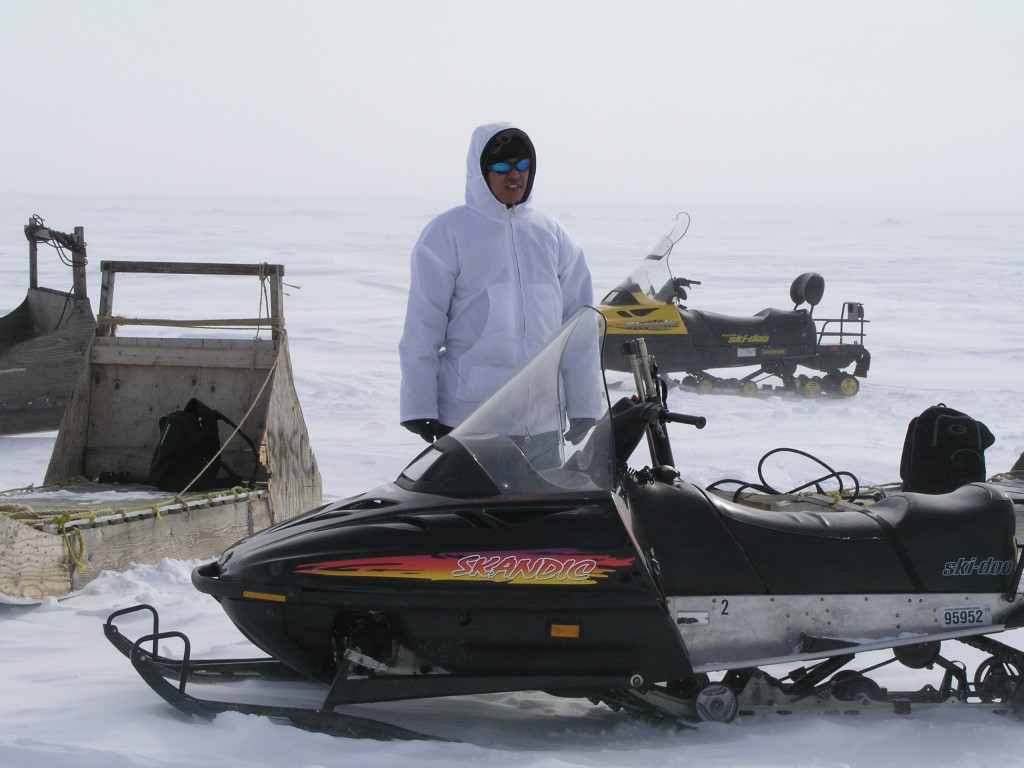
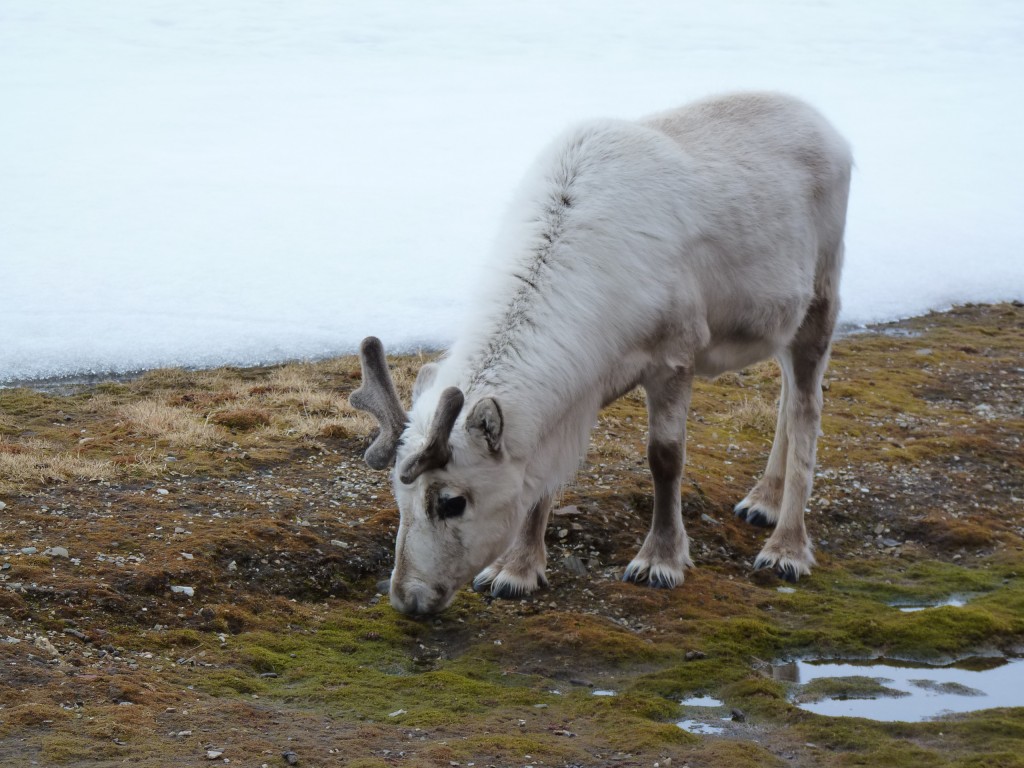
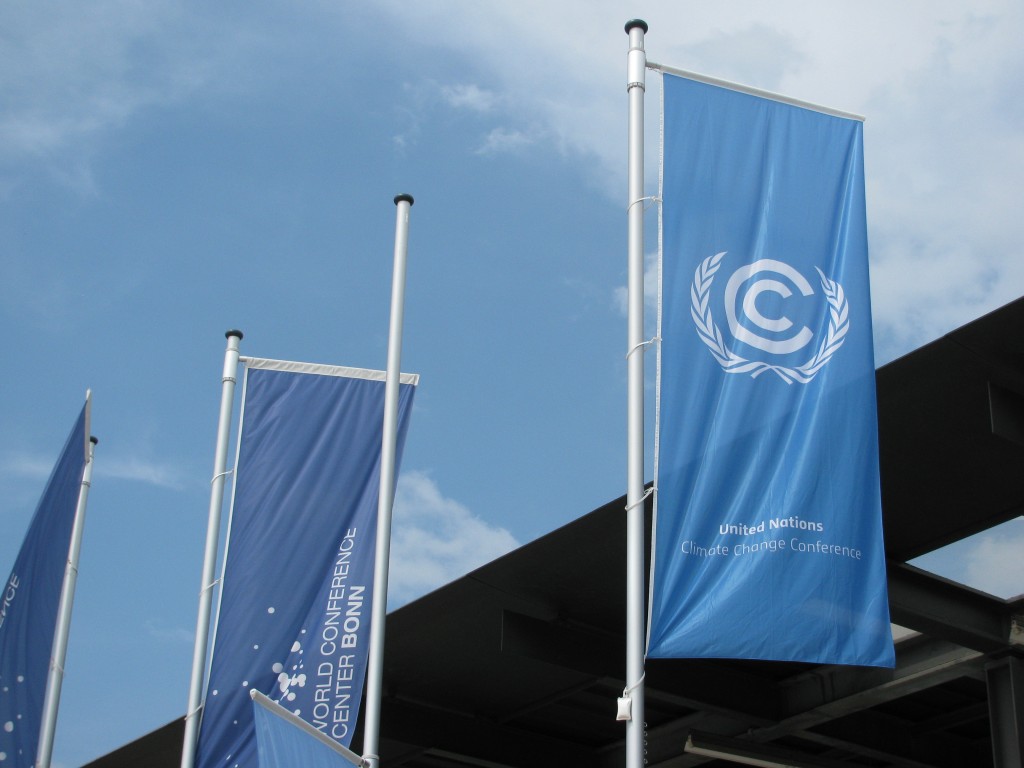
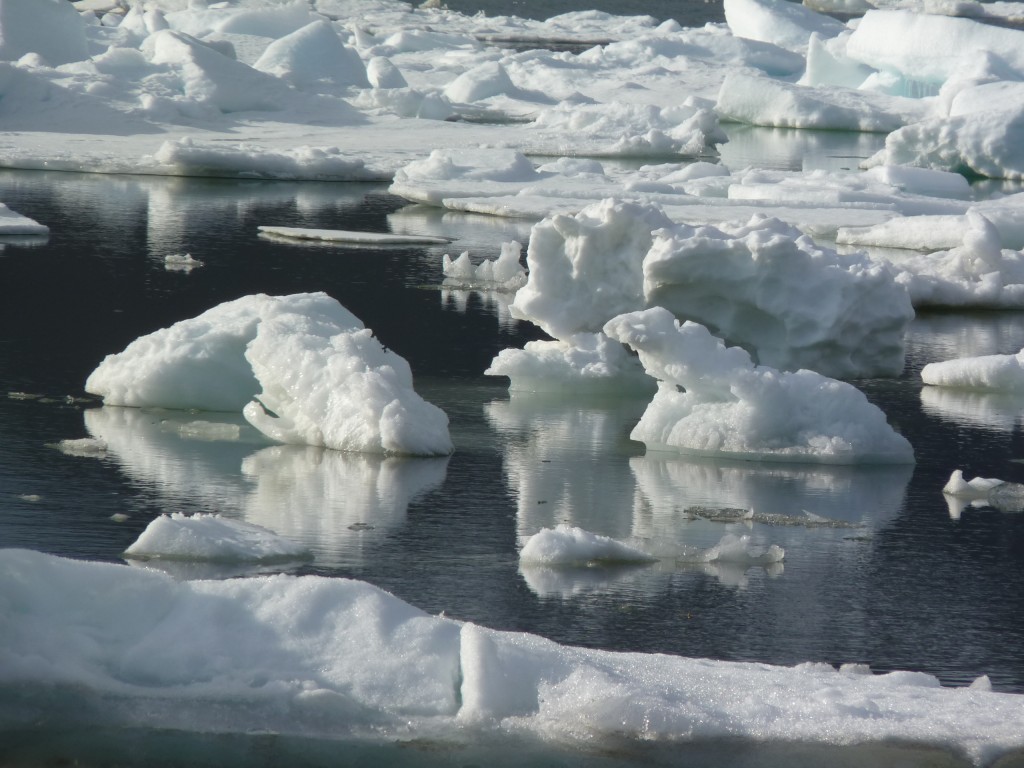


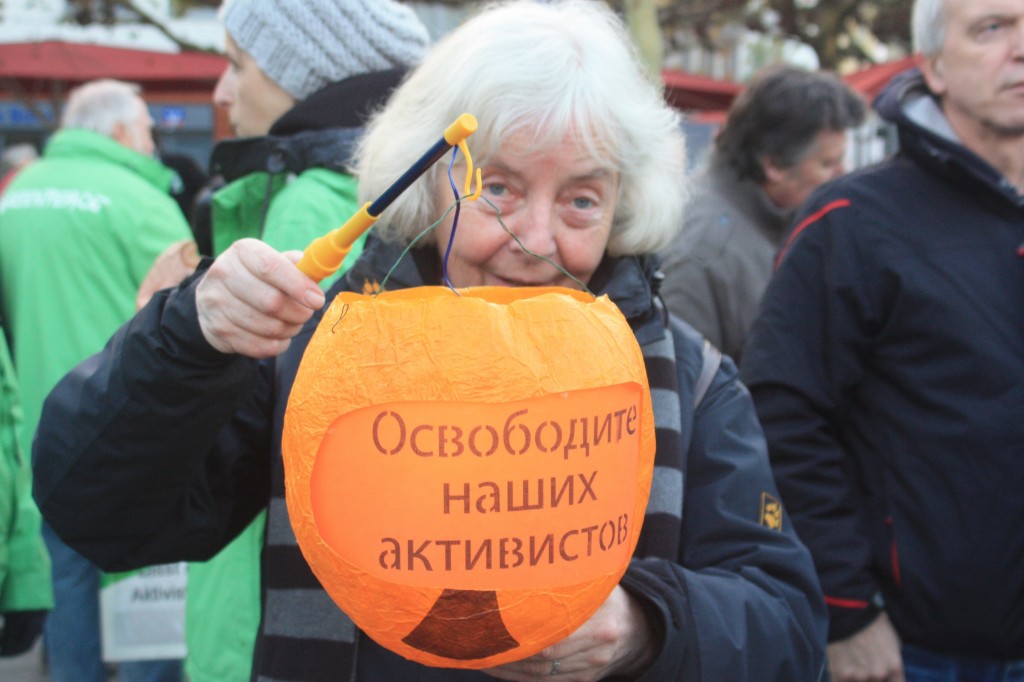
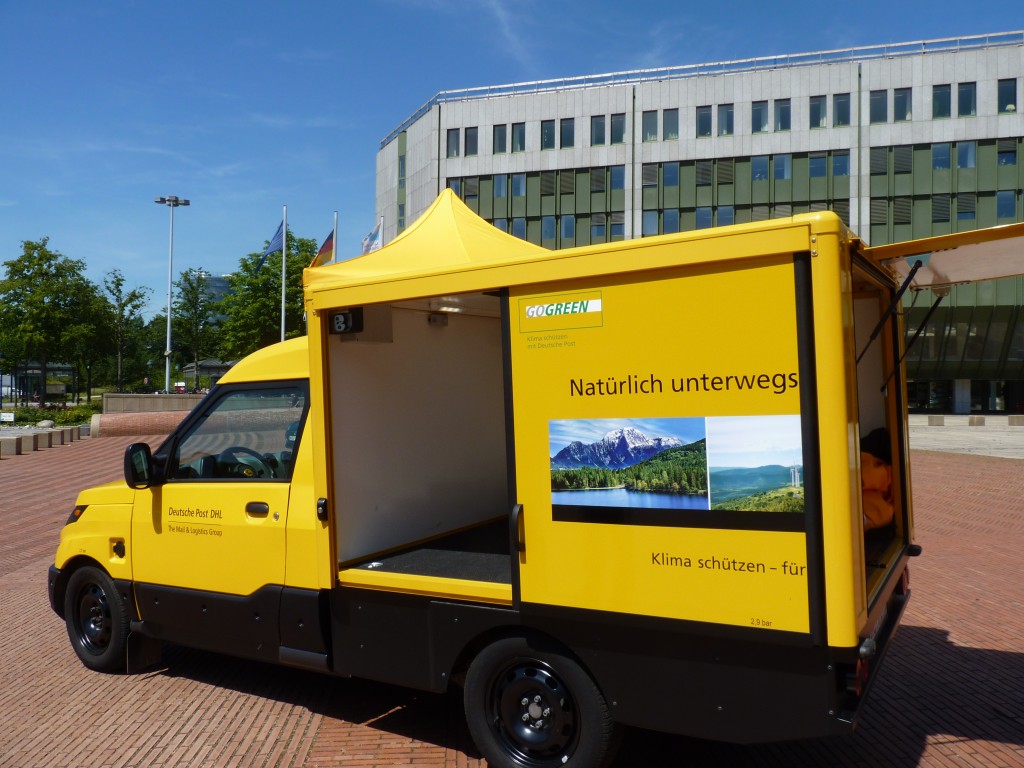
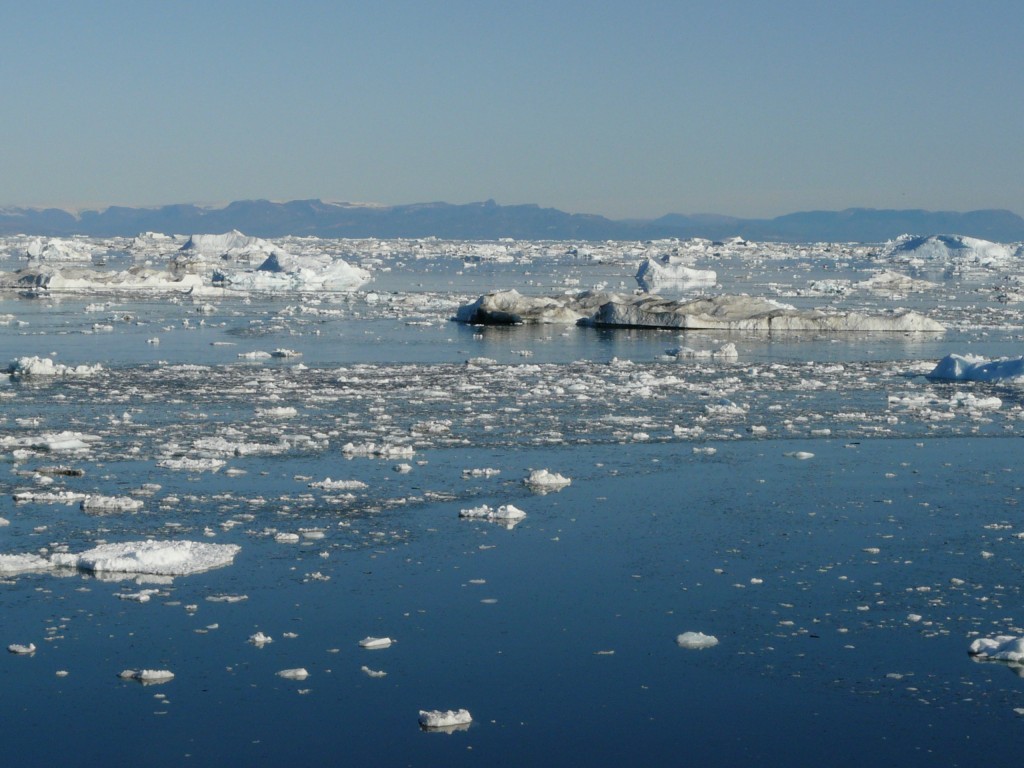
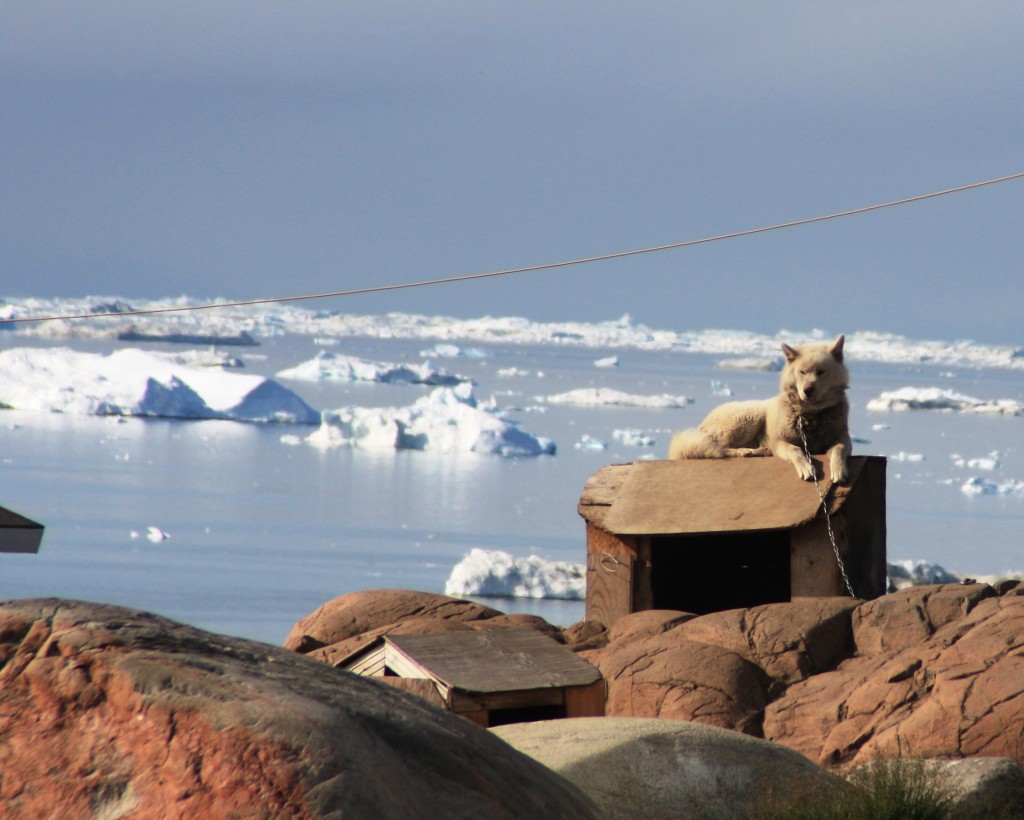
![6418.3[1]](http://blogs.dw.com/ice/files/6418.31.jpg)
















Feedback